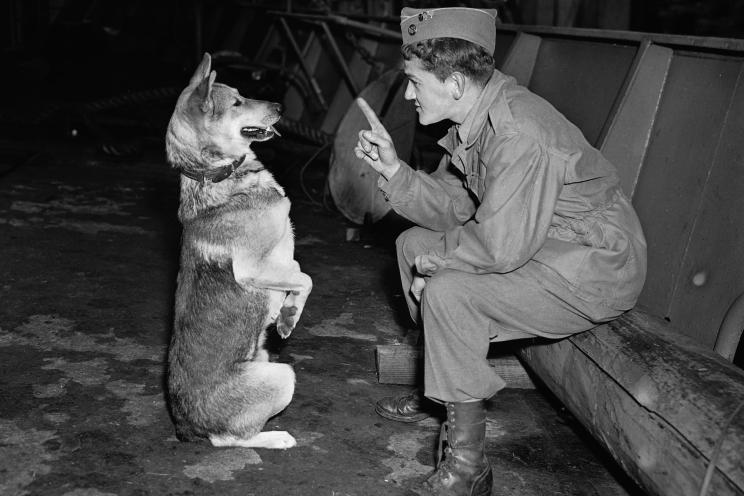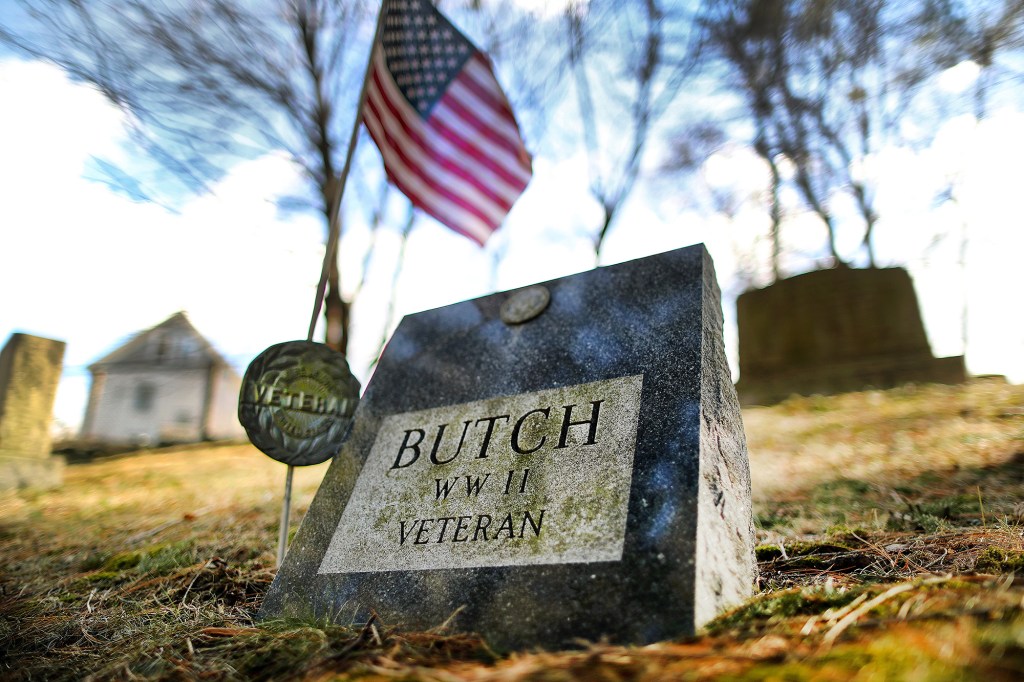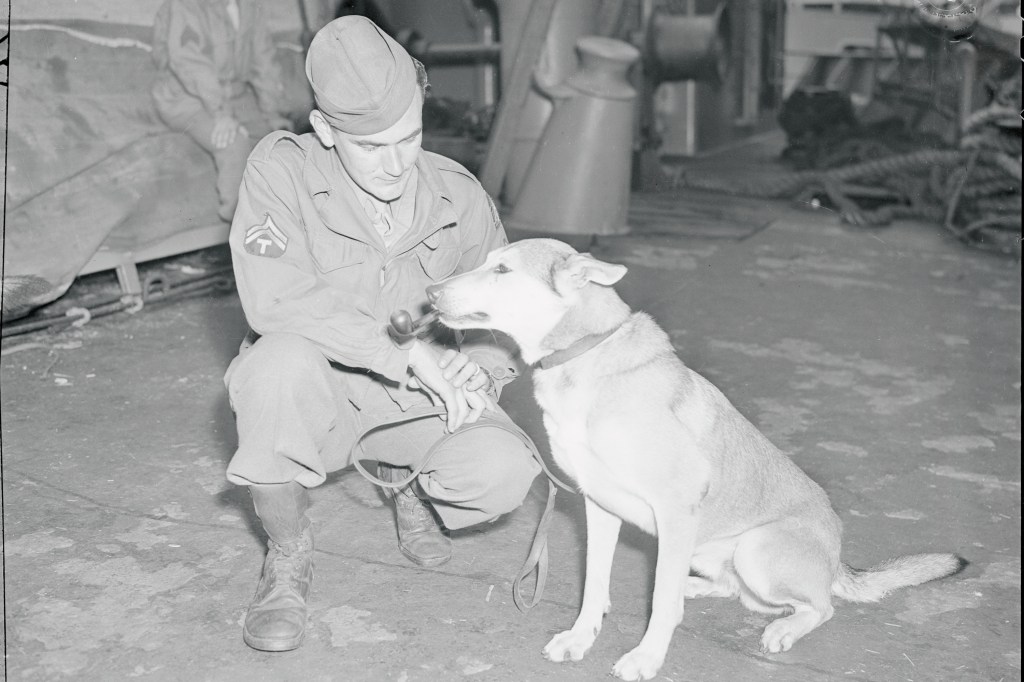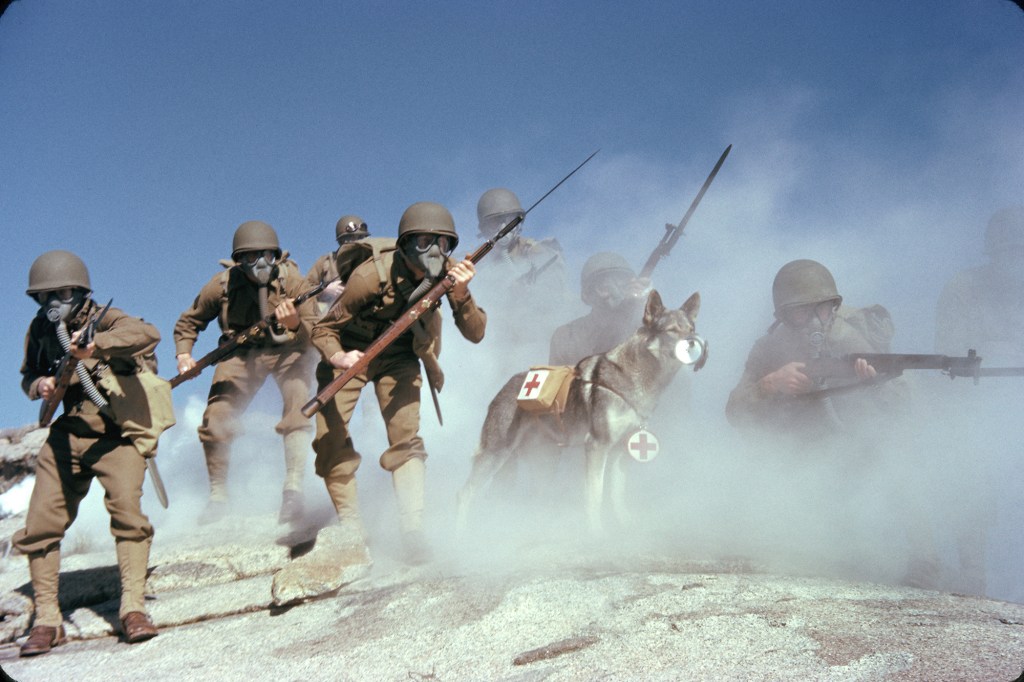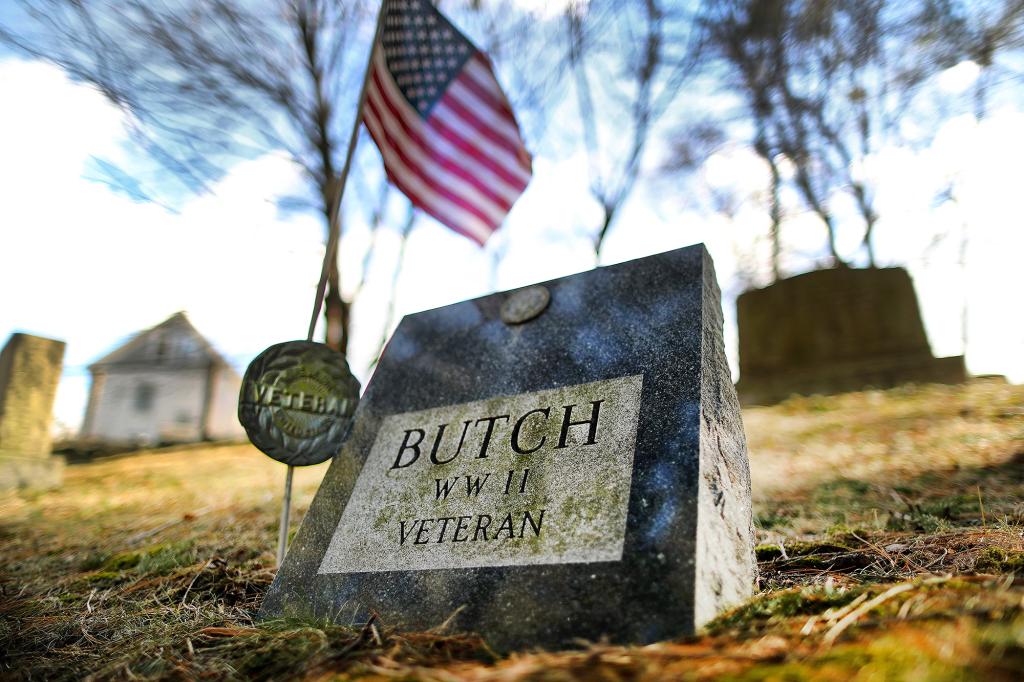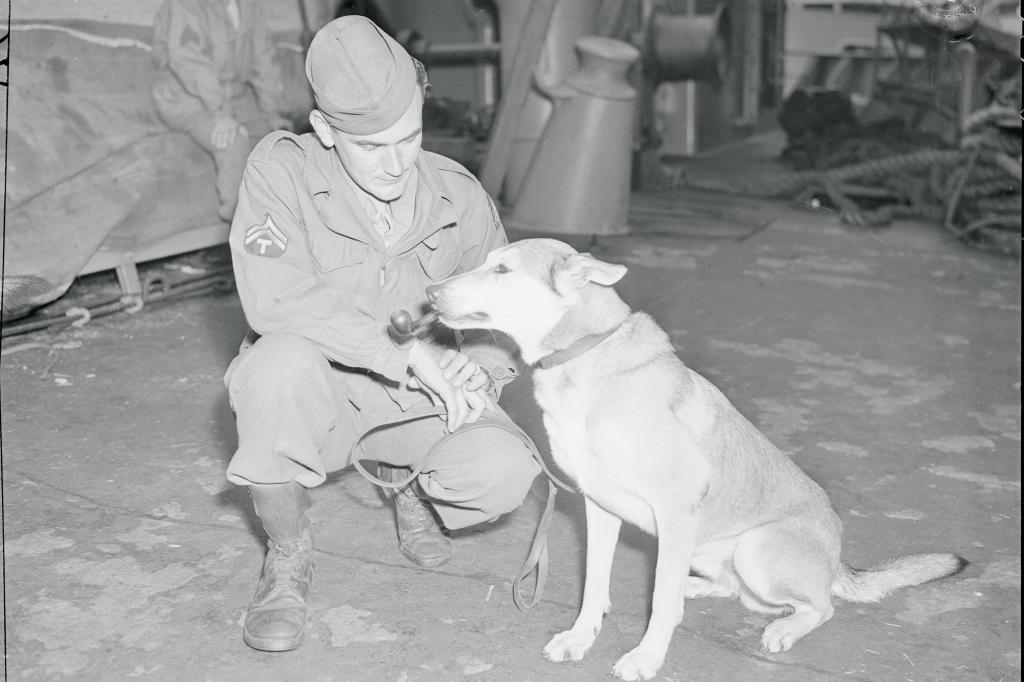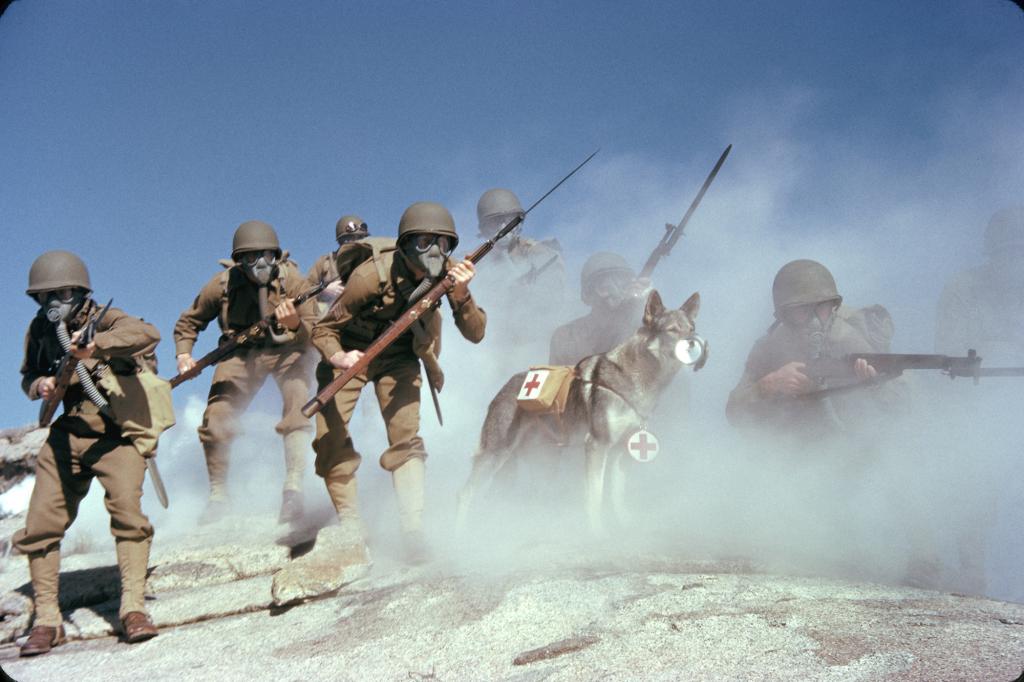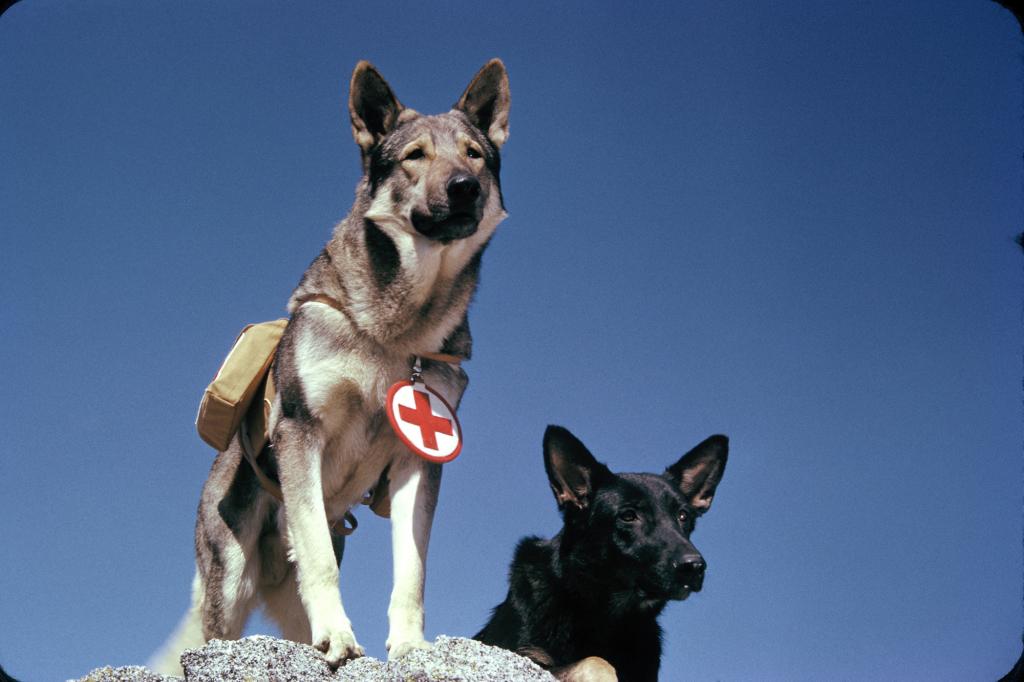The U.S. Army K-9 Corps, which trained more than 10,000 dogs to serve several branches of the American military in World War II, began barking orders to its four-legged foot soldiers on this day in history, March 13, 1942.
“Dogs have been associated with the United States Army since its inception, but their role has been primarily that of a mascot or in some other unofficial capacity,” Dr. Arthur W. Bergeron Jr. of the U.S. Army Military History Institute wrote in 2016.
He added, “Not until World War II did the Army make the connection official.”
The American Kennel Club organized a civilian group called Dogs for Defense in January 1942, in the frantic weeks after the attack on Pearl Harbor that roused the righteous might of the American people — and American pups.
Lieutenant Colonel Clifford C. Smith of the Army Quartermaster Corps became aware of the American Kennel Club effort and ran the idea of the K-9 Corps up the flagpole with Major General Edmund B. Gregory.
The unit won approval of Undersecretary of War Robert P. Patterson and began training dogs for the U.S. Navy, Marine Corps and Coast Guard, in addition to the Army.
“The K-9 Corps initially accepted over 30 breeds of dogs, but the list was soon narrowed to seven: German Shepherds, Belgian sheepdogs, Doberman Pinschers, collies, Siberian Huskies, Malamutes and Eskimo dogs,” reports The U.S. Army Airborne & Special Operations Museum of Fayetteville, North Carolina.
“Members of the K-9 Corps were trained for a total of 8 to 12 weeks. After basic obedience training, they were sent through one of four specialized programs to prepare them for work as sentry dogs, scout or patrol dogs, messenger dogs or mine-detection dogs.”
Dogs in active duty combat served as scouts and sentinels, patrolling the movements of enemy forces or warning of potential surprise attacks.
Chips, a combat canine serving with the 3rd Infantry Division in Sicily in 1943, became a U.S. Army legend when the dauntless dog attacked a machine gun emplacement and — despite suffering a gunshot wound — forced the garrison to surrender.
“Among the troops that hit the beach was the 3rd Military Police Platoon, 30th Infantry Regiment, containing Pvt. John R. Rowell of Arkansas and his sentry dog, Chips,” states the Defense Media Network.
“As dawn broke, the platoon was working its way inland when a machine gun nest hidden in what appeared to be a nearby peasant hut opened fire. Rowell and the rest of the platoon immediately hit the ground. But Chips broke free from his handler and, snarling, raced into the hut … The soldiers heard someone inside the hut fire a pistol.”
Said Pvt. Rowell of the incident, “Then there was an awful lot of noise and the firing stopped.”
“I saw one Italian soldier come out with Chips at his throat. I called him off before he could kill the man. Three others followed, holding their hands above their heads.”
The wounded Chips was awarded the Distinguished Service Cross, Silver Star and the Purple Heart — though the awards were later rescinded by Army policy, which opposed such commendations for animals.
Dogs served heroically in the Pacific Theater, too, most notably in the Battle of Guam in 1944.
“Kurt, a Doberman Pinscher, was a scout dog during WWII and is estimated to have saved the lives of 250 Marines on Guam,” writes the website of the National Services Animal Monument, which has been proposed as a way to honor America’s K-9s.
“He was mortally wounded when he went ahead of the troops to alert them to the dangers ahead.”
An incredible 25 members of the K-9 Corps were killed in Guam, making it perhaps the deadliest engagement for dogs in American history.
The National War Dog Cemetery was dedicated at Naval Base Guam in 1994 to honor the sacrifices of the brave American troops.
Dogs have served the United States Armed Forces since the earliest days of the nation.
The American Battlefield Trust traces canine service to country to the American Revolution and “Father of the American Foxhound” — George Washington himself.
Foxhounds bred by Gen. Washington in Mount Vernon were “a smarter and faster variant of its French and British counterparts,” boasts the trust.
“The breed was officially recognized by the American Kennel Club in 1886. The American foxhound is now the official state dog of Washington’s home state of Virginia.”
Dogs had emerged as a formidable fighting force in Europe in World War I when more than 1 million dogs served on all sides of the conflict.
“The most famous dog to emerge from the war was Rin Tin Tin, an abandoned German war dog found in France in 1918 and taken to the United States, where he made his film debut in the 1922 silent film ‘The Man from Hell’s River,’” writes The U.S. Army Airborne & Special Operations Museum.
“As the first animal movie star, Rin Tin Tin made the little-known German Shepherd breed famous across the country.”
Rin Tin Tin reportedly won the first-ever Oscar for Best Actor in 1929, only to have the reward rescinded and given instead to German actor Emil Jennings.
“It has been seen as one of the darkest scandals in Academy history: the tale of a cherished Hollywood star, robbed of his rightful best actor Oscar by a craven Hollywood establishment,” the Guardian of London reported in 2012.
The story cited Rin Tin Tin biographer Susan Orlean as one of the sources of the rumor of injustice.
The U.S. Army states that it employed 1,500 dogs during the Korean War, 4,000 in the Vietnam War and hundreds more in Iraq and Afghanistan.
Dogs of war provide service to troops in ways that cannot always be encapsulated in a combat report or pop-culture honor, writes the American Battlefield Trust.
“In wartime, dogs would help hunt and act as couriers, but they also provided a much-needed morale boost to the homesick injured, and disillusioned soldiers.”








